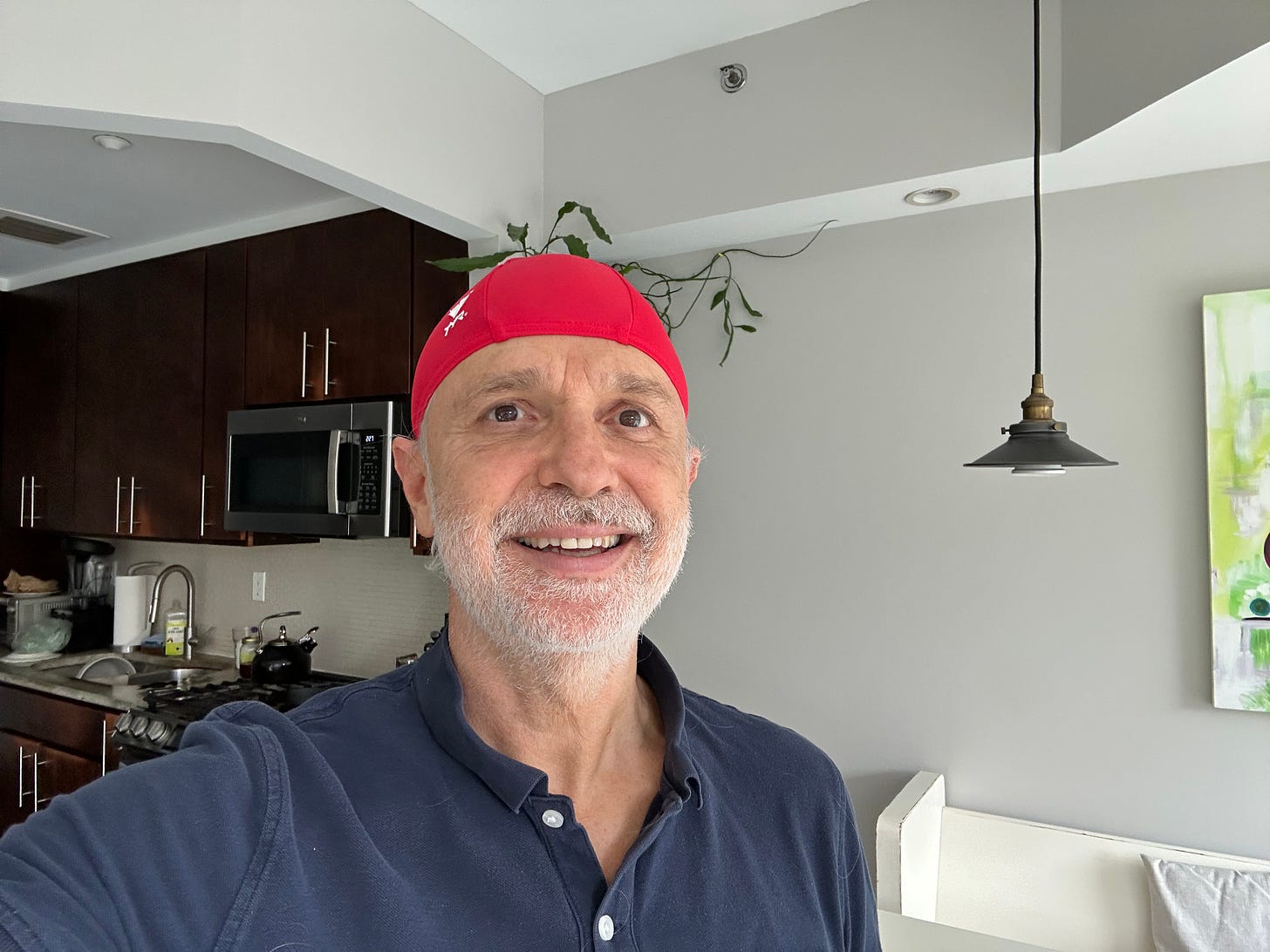Marge Piercy starts her well-known poem To Be Of Use with:
The people I love the best jump into work head first without dallying in the shallows and swim off with sure strokes almost out of sight.
That word almost matters.
Every summer in Croatia, I jump into the open sea headfirst for long-distance swims. One early morning as the sun was coming up, I found myself far from the shore. Suddenly, I felt fear of imaginary shark jaws, of being run over by a motorboat, of having leg cramps, and disappearing into the dark deep.
Walking into the kitchen that morning, I admitted to my mother-in-law that I was scared out there on the open sea, a bit shaken, actually. She was stirring a pot of polenta on the stove and, without lifting her head, said, “You are wise to be afraid.”
As a result, I have adopted the following rule: at any given time, I must be able to either touch solid ground with my feet or be within sight of another human being while swimming. And, and, and, I got myself a highly noticeable swim cap.
::Fear signals something real:: Remember how, when we were growing up, we would love it when an adult would tell us a scary story under the dark skies or a blanket?
“Tell it again. The scary story, tell it again.”
Why would children want to be scared?
And why are adults drawn to fear?
We intuitively know that fear signals an imminent encounter with something new. We have approached the end of what we know and are about to come in contact with something we don’t. This draws us in. A possibility of another world. Or, even more astonishing, a possibility of another world in this world.
Fear signals something real, something that’s hiding from the tiring light of merely wanting to be comfortable or happy.
Fear announces the future.
Fear announces the arrival of something our neural constellation has never met before. Something our previous self may survive or may not.
Our physical bodies sense it first. Skin tension. A tremble. Pressure in the chest. Fear takes residence in our bodies, awaiting our acknowledgment.
Only after we respect it are we given the courage we need to take the next step into the space or a conversation we have been avoiding.
Fear announces a change. Our future life is visiting us, sometimes knocking at the door as a messenger, sometimes crashing in as an impersonal force, sometimes seeping under the door like fresh air, and sometimes still, waiting for us down the street to come and meet it.
How do you know you are on the edge of what is about to become your new life? There is a measure of fear there. It signals not a danger, but the unknown.
Yes, this unknown could be dangerous. Crossing that line could take your life. And that’s why fear’s warning is so valuable. But this unknown you fear also holds your future.
Who you are going to become is waiting beyond that line.
Change is life itself, renewing itself. Life, larger than ours, is inviting us to be a part of it, to go a tad beyond our present identity, where a small step is often better than a large one.
This half-step into the unknown is as powerful as it is reluctant.
When you step over something, something unexpected happens: joy shows up, as unearned and uncalled as fear: fear and joy, the two sides of one primal emotion of encountering the unknown.
If it were not for the unknown’s joys, you would give up a thousand times. But you have not. You are here and awake because you are capable of being afraid, which makes you capable of experiencing joy.
Fear stands at the door and welcomes you into the life you want.




Samir, this resonates deeply, somatically and emotionally and multiple levels given where I am in my life right now. I like to talk about resistance and how we can use our reluctance as a super power to push through. Resistance comes from fear, cousins I think. Thank you for this post!
“We intuitively know that fear signals an imminent encounter with something new…Or, even more astonishing, a possibility of another world in this world.” OK - now you have peaked my curiosity and challenged my assumptions - Greg